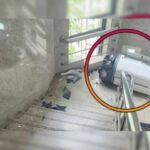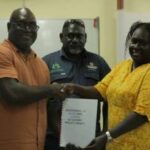Artificial Intelligence has generated eye catching and powerful images of the Bougainville Struggle for Independence.AI generates images through a process that typically involves several stages, using a variety of techniques and technologies. One of the most popular approaches for image generation is through Generative Adversarial Networks (GANs).
The Bougainville conflict, also known as the Bougainville Civil War, was a complex and multifaceted struggle for independence by the indigenous people of Bougainville, an island in Papua New Guinea (PNG). This conflict spanned from 1988 to 1998, with roots in historical, economic, and social issues.
Historical and Economic Background
1. **Colonial History**: Bougainville has a distinct cultural and ethnic identity, with its people differing significantly from the mainland Papua New Guineans. The island was initially colonized by Germany and later administered by Australia until PNG’s independence in 1975.
2. **Panguna Mine**: The discovery of large copper deposits led to the establishment of the Panguna mine by the Bougainville Copper Ltd., a subsidiary of the multinational Rio Tinto, in the 1960s. This mine became one of the largest open-cut mines in the world, generating significant revenue for PNG but causing environmental degradation and social disruption for Bougainvilleans.
3. **Grievances**: The Bougainvilleans felt marginalized as the majority of the profits from the mine were taken by the PNG government and foreign corporations, while the environmental impacts and displacement issues severely affected the local population.
The Conflict
1. **Beginning of Hostilities**: Tensions erupted into violence in late 1988 when the Bougainville Revolutionary Army (BRA), led by Francis Ona, began attacking the mine and PNG security forces, demanding compensation and greater autonomy. This escalated into a full-blown civil war.
2. **Civil War**: The conflict saw widespread violence, with the PNG Defence Force (PNGDF) and various factions, including the BRA and local resistance forces, engaging in brutal combat. The blockade imposed by the PNG government led to severe humanitarian crises on the island.
3. **Peace Efforts**: After years of intense fighting, a peace process began in the late 1990s. The Burnham Truce in 1997 and the Arawa Peace Conference in 1998 were crucial steps towards ending hostilities. The Bougainville Peace Agreement was signed in 2001, laying the groundwork for disarmament, autonomy, and a future referendum on independence.
Post-Conflict and Autonomy
1. **Autonomy**: The peace agreement granted Bougainville autonomous status within PNG, leading to the creation of the Autonomous Region of Bougainville. This autonomy included significant self-governing powers.
2. **Referendum**: In November 2019, Bougainville held an independence referendum as part of the peace agreement. An overwhelming 98% of voters opted for independence from PNG. However, the final decision requires negotiation with the PNG government and ratification by the PNG Parliament.
3. **Current Status**: As of now, Bougainville continues to work towards realizing the outcome of the referendum. The discussions between Bougainville leaders and the PNG government are ongoing to determine a peaceful and mutually agreeable path forward.

AI generated photos of Bougainville’s Struggle for Independence
•


